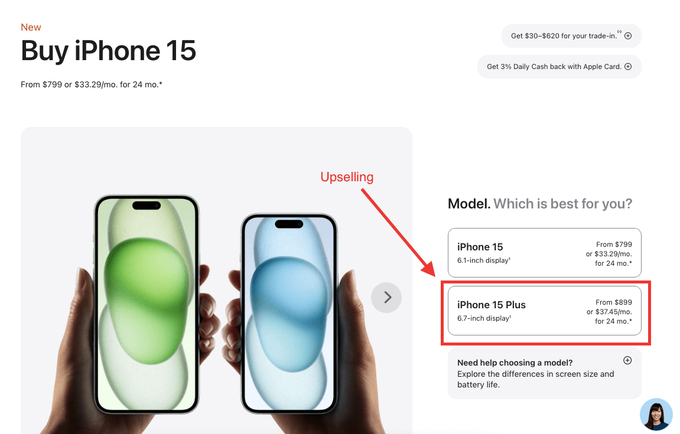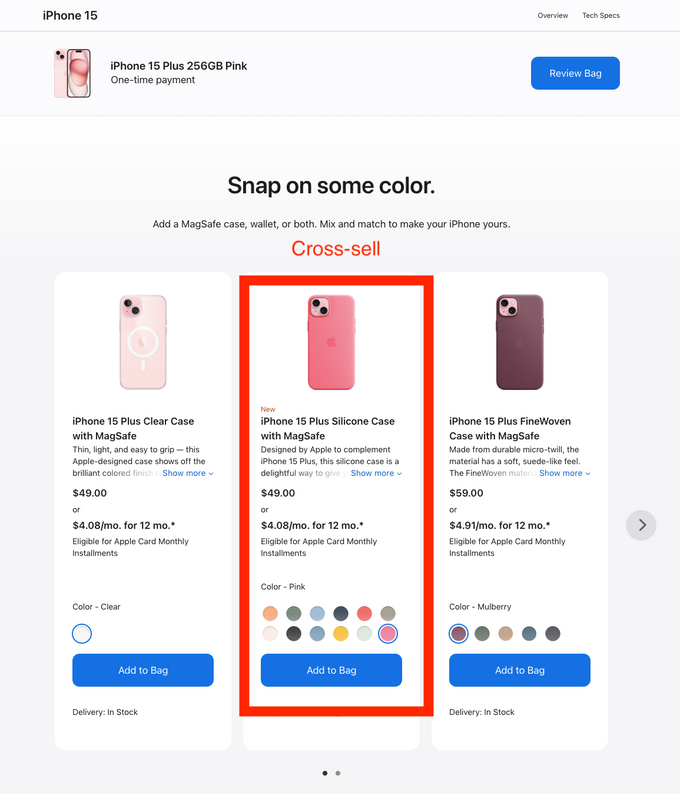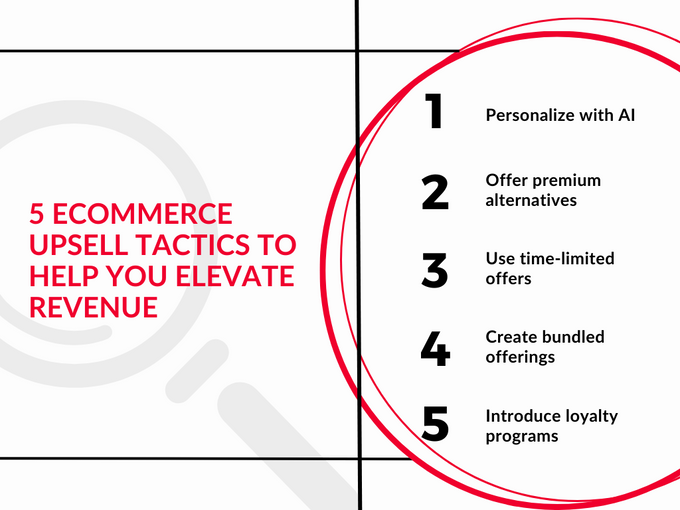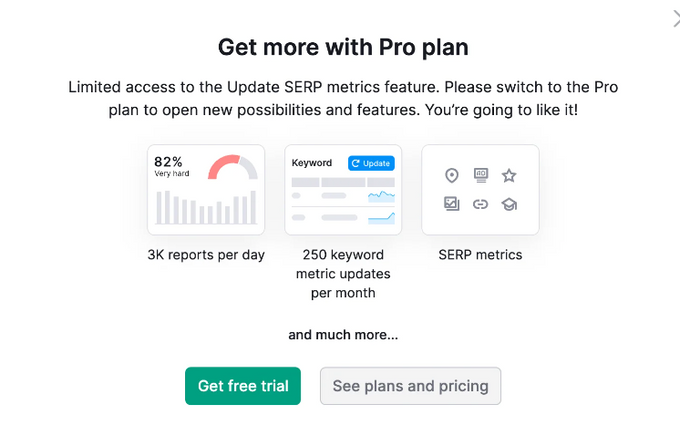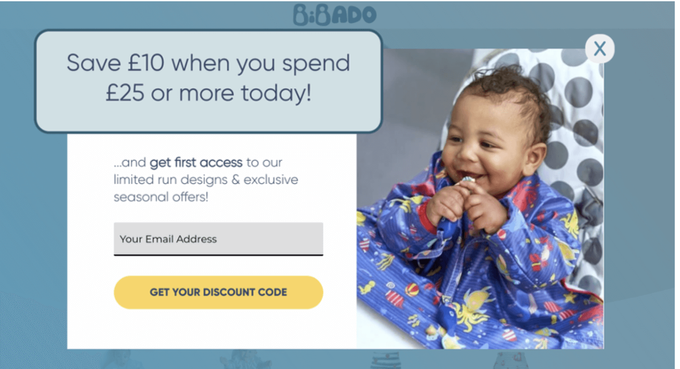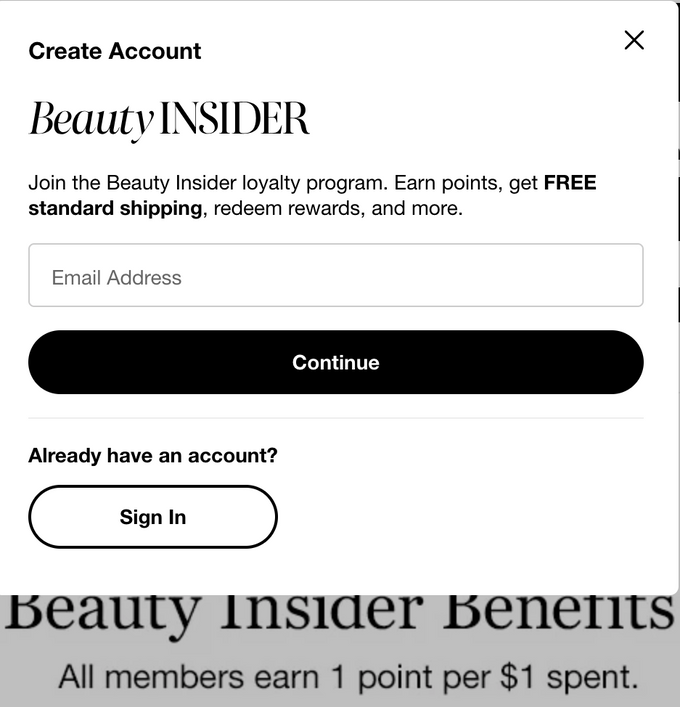5 eCommerce Upsell Tactics to Help You Elevate Revenue
Implementing effective upsell tactics can not only increase your revenue, but can also enhance the overall shopping experience for your customers.
Updated November 19, 2024

Tailored product recommendations and countdown offers are just a couple of ways to upsell in eCommerce. These strategies can provide valuable insights to help increase revenue. And the best part? Upselling can increase your revenue by between 10 and 30%.
But upselling isn’t just about making more money. It’s also about building a better relationship with your customers. A smart upselling approach, like personalization, can do more than just increase immediate profits. It can also boost customer loyalty, enhance user experience, and increase the lifetime value of each customer.
» Need to optimize the shopping experience? Here's how you can benefit from cross-selling and upselling.
Meet the Expert
Sandra Stepan, co-founder of SnapAdvantage, has 10 years in digital marketing, focusing on eCommerce expansion. With success in building 7-figure brands, she amplifies growth for top brands. An industry leader, Sandra is a trusted expert for marketing excellence.
What Is Upselling?
As you can see in the Apple store example below, upselling is when you persuade a customer to buy a more expensive version of an item or add extras to enhance the purchase.
Upselling has an impact on:
- Increasing the Average Order Value: Upselling directly increases transaction revenue by selling enhanced or premium versions of products.
- Enhancing Customer Experience: Thoughtful upselling adds value to the shopping experience and builds positive brand perception.
- Boosting Customer Lifetime Value: Successful upselling creates satisfied, loyal customers who provide repeat business over time.
- Optimizing Inventory Management: Upselling helps liquidate older or higher-margin items strategically, as you can efficiently cycle through product variants or clear out aging stock by offering attractive upgrades.
Before we get into strategies to help you upsell effectively, it's important to distinguish upselling from cross-selling. While upselling increases your sales value and enhances the customer experience by offering a superior product, cross-selling aims to expand the initial purchase.
For instance, when a customer purchases an iPhone, the Apple store might cross-sell by suggesting a protective case or other accessories to complement the main purchase.
Alternatively, the retailer could upsell by recommending wireless, high-end earphones instead of the wired, more economical option the customer initially considered.
This augments the sales value by introducing new products into the selection. Great eCommerce strategies combine cross-sell and upsell product recommendations to enhance the shopping experience.
However, it is important to approach this in a non-intrusive manner and emphasize the value it adds. This helps customers make informed decisions that benefit them. The focus should be on providing value, not just increasing sales.
» This solution helps you cross-sell and upsell more effectively.
5 eCommerce Upsell Tactics to Help You Elevate Revenue
1. Personalize With AI
AI uses customer data to make personalized upselling suggestions. So if a customer regularly shows interest in a certain product type, AI can suggest pricier items or upgrades in that category. This makes the upsell more relevant. So if a customer often buys silver jewelry, an AI-powered tool or app might recommend a higher-priced silver piece.
The goal of using AI in upselling is to improve the customer experience. Personalized recommendations make customers feel valued and understood, leading to higher satisfaction and loyalty, and ultimately more upsells.
» Discover how AI can optimize your customers' eCommerce experience.
2. Offer Premium Alternatives
Let's say you offer an alternative product with slightly more features or benefits than the one your customer has added to their cart. How do you persuade them to shell out a little extra for added benefits?
A great way to do this is to highlight the natural ways a premium alternative upsell product can help your customers. You can do this by showcasing them in a side-by-side comparison or using pop-ups to promote the benefits you could get with an upgrade.
Strong copywriting skills are key here, as the right messaging can significantly enhance the perceived value of premium products.
Semrush lets users sign up for free accounts with limited access to platform features. This way, they can get to know the platform without the commitment. After offering this limited access, Semrush strategically places upgrade CTAs across its platform to encourage customers to upgrade to paid plans and unlock full access.
3. Use Time-Limited Offers
Time-limited offers refer to exclusive time-sensitive promotions that create urgency for quick upsell decisions. This tactic generates rapid, short-term results.
Use on-site banners and emails to inform customers about these time-sensitive opportunities. The fear of missing out will incentivize many to make hasty purchasing decisions.
With strategic product pairings, you can boost conversion rates by over 25%.
BiBado, a childcare eCommerce brand, offers a flash sale: "Save £10 when you spend £25 or more today!" The short time limit creates urgency and encourages customers to purchase immediately before the deal expires.
4. Create Bundled Offerings
Bundled offerings mean grouping related products together and selling them at a reduced price. A product bundling strategy appeals to customers looking for good deals and helps boost the size of each order. Plus, product bundles can help strengthen customer relationships and deepen their connection with your brand.
Here’s how it works: You first identify products that pair well together by analyzing the market. Then, you bundle these products and set a compelling price to motivate purchases. Remember to refresh your bundles regularly to maintain their appeal and relevance.
Samsung offers a bundle deal on appliances, giving customers $150 off 2, $375 off 3, and $650 off 4 or more selected appliances. The package bundle increases the likelihood that a customer who planned to just buy a refrigerator would add other items like a microwave or dishwasher to their order.
5. Introduce Loyalty Programs
Loyalty programs are all about saying “thank you” to your customers. They’re a way to give back to your frequent shoppers by rewarding them for their high-value purchases. The goal? To strengthen your relationship with them and boost their lifetime value.
Set up a program where customers earn points based on how much they spend. The more they spend, the more rewards they rack up. As they accumulate points, they move up in tiers and unlock perks like discounts. Sure, setting it up might take some work, but the payoff in the long run is well worth it.
Sephora’s Beauty Insider program awards members points based on their purchases. Hitting platinum status gives perks like free shipping and birthday gifts. This incentivizes customers to make consistent high-value purchases to achieve elite status and rewards.
» Looking for repeat customers? Here's how you can create long-lasting customer relationships.
Upsell, Don't Upset
Implementing effective upselling strategies can significantly elevate your eCommerce revenue when done thoughtfully. Personalize offers with AI to tailor them to individual customers, offer premium alternatives as higher-tier options, create time-limited offers to drive urgency, bundle complementary products together for added value, and introduce loyalty programs to incentivize repeat purchases.
Remember to take a data-driven approach and conduct A/B testing to determine which tactics resonate best with your audience.
